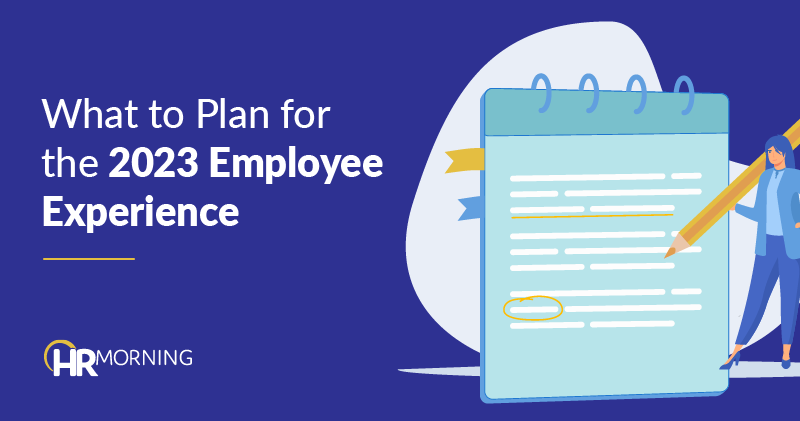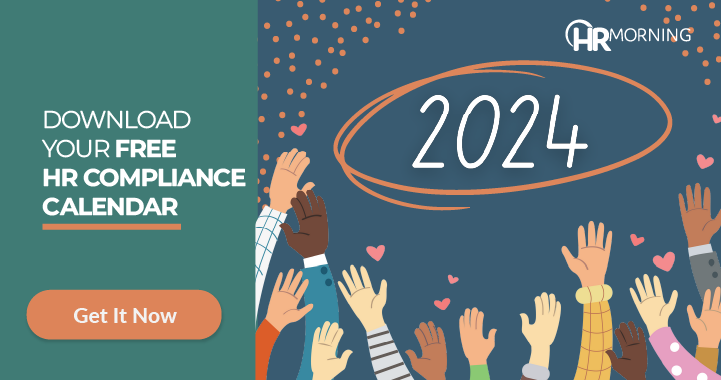What will the today’s employee experience look like?
While HR can’t predict the next ideal experience, you can most definitely help define it. And you’ll likely want to make it better than ever.
The key will be to act on employees’ emerging expectations and underlying needs that changed dramatically over the past several years.
Choosing Today’s Employee Experience
“Just because employees are now choosing to stick around doesn’t mean that they’re suddenly going to be highly engaged, highly motivated employees,” says Jabra SVP Holger Reisinger. “To reverse the years-long trend in decreasing employee engagement, leaders must begin to show more recognition – for the financial challenges employees are facing, for the changing role that work is playing in people’s lives, and simply for a job well done.”
To move forward with that as a guidepost, here are five of the top employee experience expectations and trends – and how you can meet them.
Need for Assurance
Nearly everything has been unsettling in the past few years – pandemic, work and home upheavals, social concerns and the economy. Perhaps the most important workplace trend today will be creating a greater sense of security.
Employees are looking for assurance that their job and their employer are on solid footing, according to the Qualtrics Employee Experience Trends Report.
“Employee expectations have fundamentally changed, and the progress we’ve made cannot be undone,” says Qualtrics Chief Workplace Psychologist Dr. Benjamin Granger. “But as the economic picture shifts and people focus on their basic needs, clear and open communication are essential. Employees want reassurance that their jobs are secure, and that they’ll get some relief from burnout after the disruption brought on by the confluence of COVID, an economic downturn and geopolitical events.”
To reassure employees, transparency is critical. Ask leaders to regularly give employees a bigger view of company performance and goals going into the new year. Then, ask managers to talk with their teams about where they fit in for hitting goals. Finally, require managers to have at least quarterly one-on-ones with employees to review performance, recognize accomplishments and set new goals.
Focus on Communication to Avoid Conflict
Poor communication is the No. 1 cause of conflict at work, according to research from Myers-Briggs. And employees spend about four hours a week dealing with the conflict.
It’ll be important to decrease conflict to improve the experience.
Focus on clearer communication to accomplish that. Myers-Briggs Head of Thought Leadership John Hackston suggests these tips:
- Give front-line managers time, answers and backup to communicate HR policies and corporate information directly to employees
- Listen to employees more throughout the year. Take pulse surveys, reviewing subjects that are critical to employees and your business, and adding topics that you hear in the undercurrent.
- Solicit feedback. Ask employees how they feel about policies, procedures and the workplace experience. Give them outlets – townhalls, anonymous email, office hours, etc. – to share their ideas that might improve the workplace.
Maintained Work/Life Balance
This employee experience expectation isn’t going away after years on the priority list. In fact, satisfaction with work/life balance dropped to 71% from 73% in the past year, the Qualtrics survey found.
But here’s the catch: 63% of employees who feel they have a good work/life balance are willing to go above and beyond for their company. So it pays off to help employees continue to achieve the balance.
The best way: Regular check-ins. Work/life balance is usually found and maintained at the team level. Give front-line managers time, direction and tools for healthy, regular check-ins where they gauge and level the balance.
Need for Hybrid Leadership
While many organizations continue to bring staff back on-site, most will continue hybrid work arrangements. And leading a team of hybrid employees isn’t the same as leading a group that’s onsite and together daily.
“The dynamics in a hybrid environment are complicated and helping every employee get what they need to be effective takes effort, insight and attention,” says Hackston. “However, strong hybrid leadership ensures that workers feel understood and that they are given the best chances of success, building a culture of trust in the workplace.”
So HR and corporate leaders will want to equip front-line managers with more skills and knowledge to manage their hybrid teams. Whether you make it required or voluntary, do it in-house or hire a trainer, get front-line managers training on leading a hybrid team so they can improve the employee experience.
Focus on Employee Development
As the hybrid work trend goes on, employees working in that environment will want and need more specialized learning and development.
And it makes good business sense to offer it: Three-quarters of employees would stay longer at a company if they could benefit more from learning and development support, according to a Microsoft study.
“When work happens virtually, so too must personal and professional development. This means that the technology we use at work will shape the way we develop as professionals and as people,” says Jabra President & GM of North America Kelly Nagel. “We can expect companies to more widely integrate digital benefits such as online courses, subscriptions to mental health apps and professional collaboration technology into their employee experiences.”
Have you considered those options yet? If so, the next critical step is to make sure employees know the benefits exist with an internal marketing effort. From there, schedule training on the learning and development opportunities so you’re sure they know what to do with the tools.



